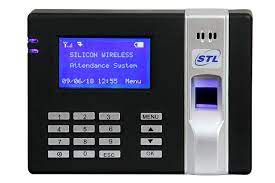Attendance Biometric System: A Modern Solution for Efficient Workforce Management
In today’s fast-paced and dynamic business environment, maintaining accurate records of employee attendance is crucial for effective workforce management. Traditional methods of tracking attendance, such as manual timesheets or punch cards, are prone to errors and can be easily manipulated. This is where attendance biometric systems come into play, offering a modern and reliable solution.
An attendance biometric system utilizes advanced biometric technology to record and verify employee attendance. It relies on unique physical or behavioral characteristics, such as fingerprints, facial recognition, or iris scans, to accurately identify individuals. This ensures that each employee’s presence is recorded with precision and eliminates the possibility of time theft or buddy punching.
One of the key advantages of an attendance biometric system is its efficiency. With a simple scan or touch, employees can quickly clock in and out without the need for cumbersome paperwork or passwords. This saves valuable time for both employees and HR personnel, allowing them to focus on more important tasks.
Moreover, an attendance biometric system enhances security within the workplace. By relying on individual biological traits for identification, it becomes nearly impossible to forge or duplicate attendance records. This eliminates the risk of unauthorized access to sensitive areas and provides a secure environment for employees and company assets.
Additionally, an attendance biometric system offers real-time data collection and reporting capabilities. HR departments can easily generate accurate reports on employee attendance patterns, late arrivals, early departures, and absenteeism. These insights enable better decision-making regarding workforce management strategies and help identify areas that require improvement.
Implementing an attendance biometric system also promotes fairness among employees. It eliminates favoritism or bias that may occur during manual record-keeping processes by ensuring that every employee is treated equally based on their actual presence at work. This fosters a transparent work culture where accountability is valued.
Furthermore, an attendance biometric system can be seamlessly integrated with other HR management software and payroll systems. This integration streamlines the entire attendance tracking process, reducing administrative burdens and minimizing the chances of errors in payroll calculations.
It is worth mentioning that attendance biometric systems are designed with privacy and data protection in mind. Biometric data is securely stored and encrypted, ensuring that employee information remains confidential and compliant with relevant data protection regulations.
In conclusion, an attendance biometric system offers numerous benefits for efficient workforce management. It provides accurate and reliable attendance records, enhances workplace security, saves time and resources, promotes fairness among employees, and facilitates seamless integration with other HR systems. By adopting this modern solution, businesses can streamline their attendance tracking processes and optimize their overall operational efficiency.
Frequently Asked Questions about Attendance Biometric Systems
- Which software is used in biometric attendance system?
- What is the biometric system of attendance?
- What is the cost of Aadhaar enabled biometric attendance system?
- Which biometric device is best for attendance?
Which software is used in biometric attendance system?
There are several software options available for biometric attendance systems, and the specific software used can vary depending on the manufacturer or provider of the system. Here are some commonly used software solutions for biometric attendance systems:
- Attendance Management Software: This software is specifically designed to manage employee attendance records. It allows administrators to track and monitor employee attendance, generate reports, and manage leave requests.
- Biometric Device Management Software: This software is used to configure and manage the biometric devices themselves. It enables administrators to set up user profiles, enroll fingerprints or other biometric data, and manage device settings.
- Integration Software: Some biometric attendance systems offer integration capabilities with other HR or payroll software. Integration software allows for seamless data exchange between the biometric system and other HR-related systems, such as payroll management or employee database systems.
- Access Control Software: In cases where the biometric attendance system is also integrated with access control functionality (e.g., granting access to restricted areas based on fingerprint verification), access control software is used to manage user permissions and access rights.
It’s important to note that the specific software used may depend on the brand or model of the biometric attendance system being implemented. Different manufacturers may offer their own proprietary software solutions tailored to their hardware devices.
What is the biometric system of attendance?
The biometric system of attendance is a technology that uses unique physical or behavioral characteristics of individuals to accurately record and verify their attendance. It relies on biometric data, such as fingerprints, facial features, iris scans, voice recognition, or hand geometry, to identify individuals and track their presence in a particular location or at specific times.
When an employee interacts with a biometric attendance system, their biometric data is captured and compared against the stored templates in the system’s database. If there is a match, the system records the employee’s attendance. This process ensures that only authorized individuals can gain access and accurately tracks their presence without relying on traditional methods like punch cards or manual timesheets.
The biometric system of attendance offers several advantages over traditional methods. It eliminates time theft and buddy punching since each individual’s unique biometric traits cannot be easily replicated or shared. It provides accurate real-time data on employee attendance patterns, late arrivals, early departures, and absenteeism. It also enhances security by preventing unauthorized access to sensitive areas.
Furthermore, the implementation of a biometric attendance system streamlines administrative processes by automating attendance tracking and integrating with other HR management software and payroll systems. This reduces errors in payroll calculations and saves valuable time for both employees and HR personnel.
It is important to note that companies must ensure proper privacy measures when implementing a biometric attendance system. Biometric data should be securely stored and protected to comply with relevant data protection regulations and safeguard employee privacy.
Overall, the biometric system of attendance offers an efficient and reliable solution for tracking employee presence based on their unique biological traits. It enhances accuracy, security, fairness, efficiency, and integration capabilities within workforce management processes.
What is the cost of Aadhaar enabled biometric attendance system?
The cost of an Aadhaar enabled biometric attendance system can vary depending on various factors such as the brand, features, scalability, and additional services included. It is important to note that I do not have real-time pricing information as it can change over time and may vary from one vendor to another.
Generally, the cost of an Aadhaar enabled biometric attendance system can range from a few thousand rupees to several lakhs, depending on the complexity and requirements of the organization. The cost typically includes hardware components such as biometric devices (fingerprint scanners or iris scanners), a central server or cloud-based infrastructure, software licenses, installation, training, and ongoing technical support.
It is recommended to contact authorized vendors or service providers who specialize in Aadhaar enabled biometric attendance systems for accurate pricing information tailored to your specific needs. They can provide you with detailed quotations and help you choose the right solution that aligns with your budget and requirements.
Which biometric device is best for attendance?
There are several biometric devices available in the market that are suitable for attendance tracking. The choice of the best device depends on various factors such as the specific requirements of the organization, budget, and the level of accuracy desired. Here are some popular biometric devices commonly used for attendance:
- Fingerprint Scanners: Fingerprint scanners are widely used for attendance tracking due to their high accuracy and reliability. They capture unique fingerprint patterns to identify individuals and record their attendance.
- Facial Recognition Systems: Facial recognition systems use advanced algorithms to analyze facial features and match them with stored data. These systems offer a touchless and convenient way to track attendance.
- Iris Scanners: Iris scanners capture detailed patterns in the iris of an individual’s eye for identification purposes. They provide a highly accurate method of attendance tracking, but they can be more expensive compared to other options.
- Palm Vein Scanners: Palm vein scanners use near-infrared light to capture vein patterns in an individual’s palm. This technology provides a highly secure and accurate method of attendance tracking.
- Voice Recognition Systems: Voice recognition systems analyze unique vocal characteristics to identify individuals. While they can be used for attendance tracking, they may have limitations in noisy environments or cases where voice quality varies significantly.
- Multi-Modal Biometric Devices: Some devices combine multiple biometric modalities, such as fingerprint and facial recognition or fingerprint and iris scanning, for enhanced accuracy and security.
When selecting a biometric device for attendance tracking, it is important to consider factors such as ease of use, compatibility with existing systems, durability, scalability (if needed), and vendor reputation for support and maintenance.
Ultimately, the best biometric device for attendance will depend on the specific needs and preferences of your organization. It is recommended to evaluate different options, consult with reputable vendors or experts in the field, and choose a device that aligns with your requirements while providing accurate and reliable attendance tracking capabilities.



